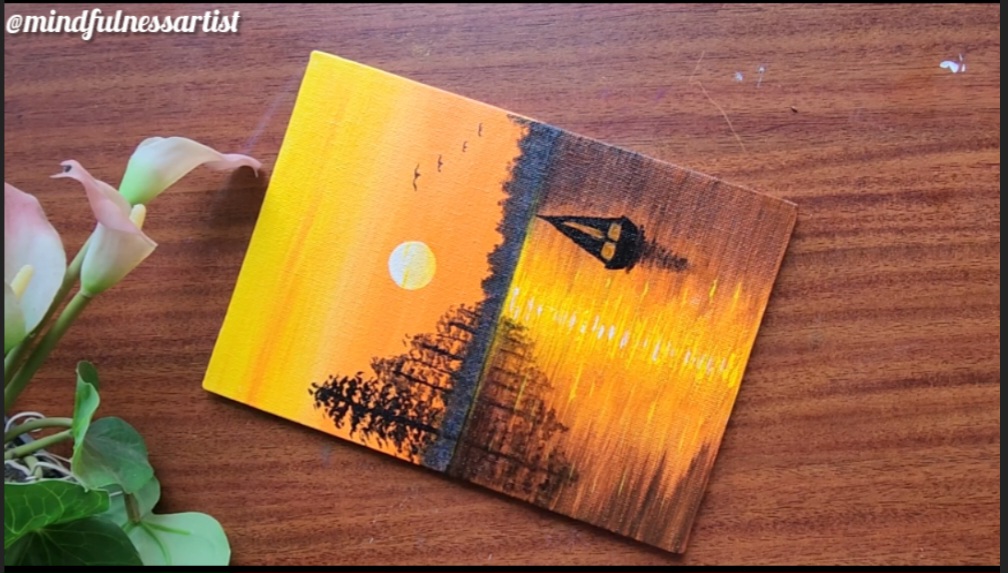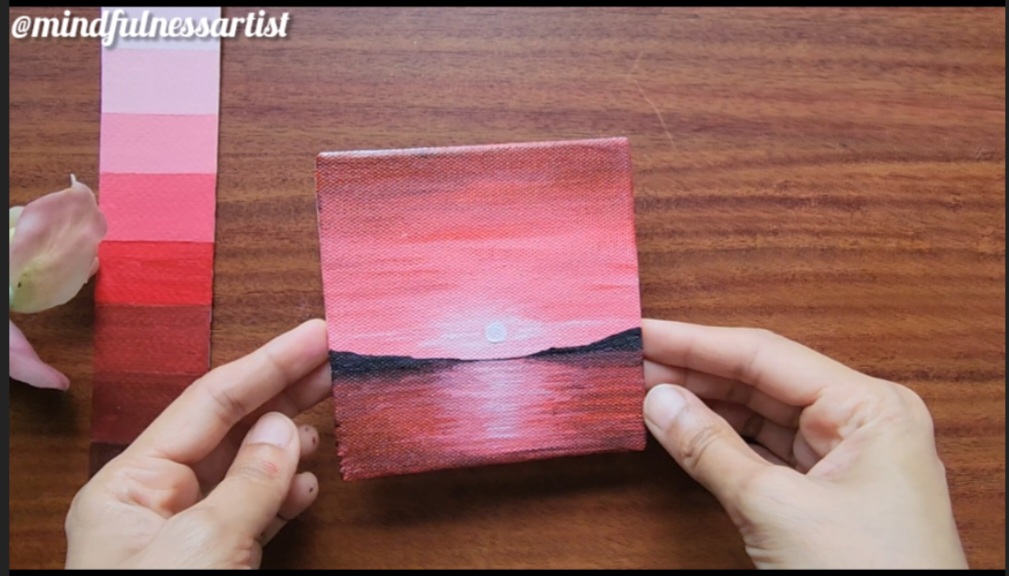
Now that you’ve mastered the art of creating a color value scale, it’s time to put that knowledge into practice! A great way to apply what you’ve learned is to create a monochromatic painting. A monochromatic painting uses only one color and its various values (tints and shades) to create a complete image. This exercise is fantastic for helping you see and understand how value, not just color, is what creates a sense of light, shadow, and depth in your artwork. Let’s use our red value scale to paint a beautiful, minimalist sunset.
Step 1: Gather Your Materials :
For this project, you’ll need a small canvas, your Cadmium Red, white, and black paint, and your palette. Keep the red value scale you just created nearby as your reference! It’s your guide to mixing the different shades you’ll need.
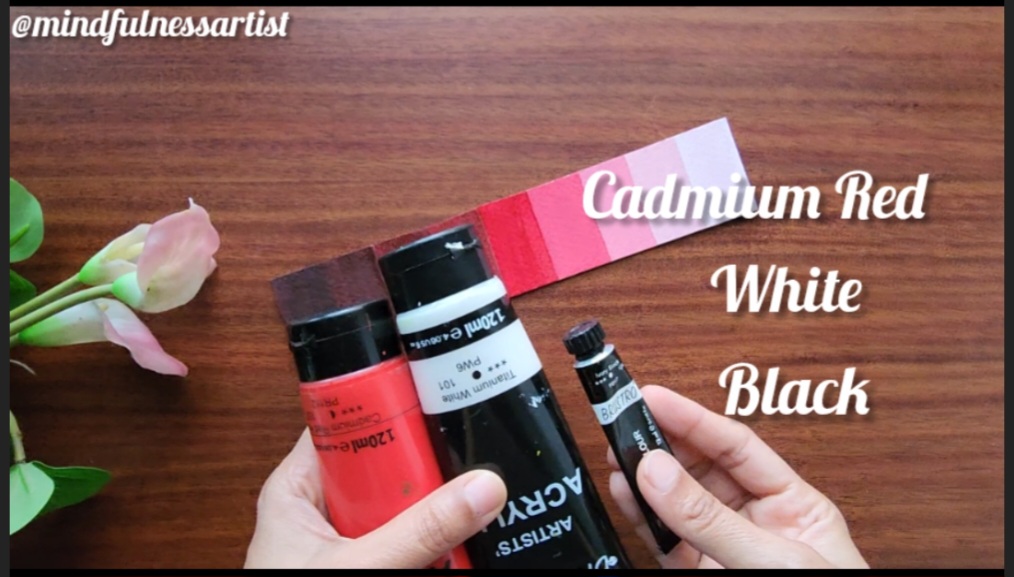
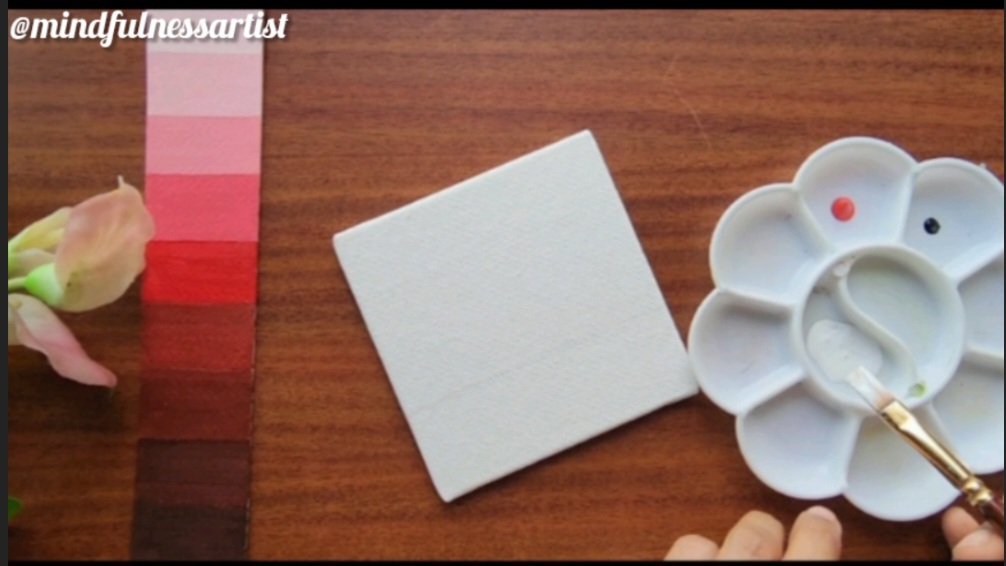
Step 2: Prepare the Canvas :
To begin, you can sketch out a simple horizon line on your canvas. This will help you plan the composition of your sunset scene. You can also prime your canvas with a thin layer of white paint if you wish, to provide a smooth base for your colors.
Step 3: Build the Sky :
Using your red value scale as a guide, we’ll start painting the sky. The lightest values should be at the top of the canvas, representing the brightest part of the sky during a sunset.
- Begin with the palest pink from your palette (your lightest tint of red). Paint the upper portion of the sky, blending it downwards.
- Gradually add a little more red to your mix to create the next shade on your value scale. Paint this color below the first, blending the two colors together to create a smooth transition.
- Continue this process, adding a bit more red each time to progressively darken the sky as you move towards the horizon line. The area just above the horizon will likely be your pure red or a slightly lightened version of it. The goal is to create a beautiful, smooth gradient.
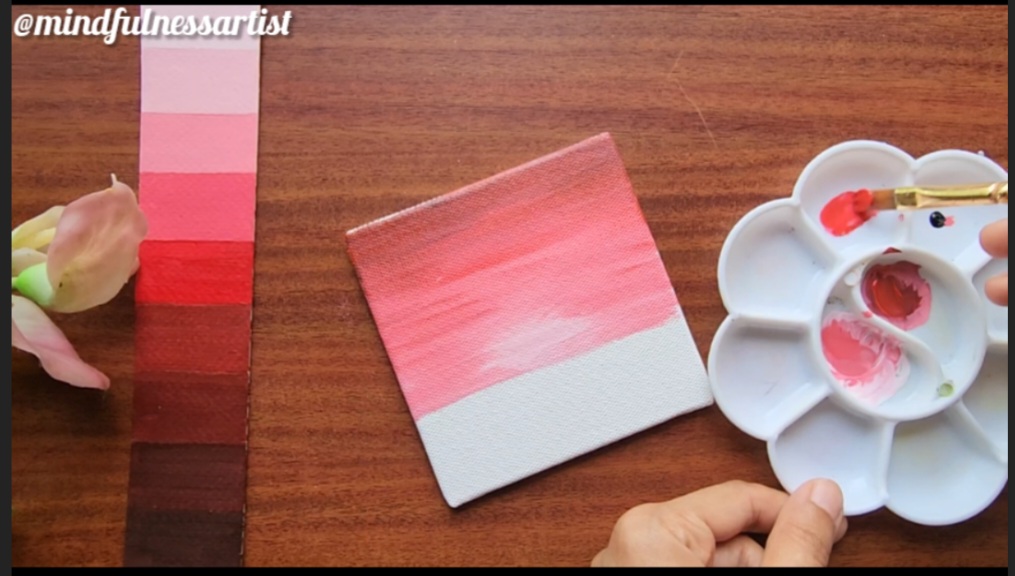
Step 4: Create the Land and Water :
Now for the darkest parts of the painting—the land and the water.
- Using the darkest shades from your value scale (the shades you created by adding black), paint the land or a distant mountain range along the horizon line. This deep, dark value will create a strong contrast against the bright sky, making the sunset appear even more brilliant.
- For the water, use a slightly lighter version of your darkest shade. Paint the reflection of the sky, using horizontal strokes to suggest the movement of the water. You can even add some small, dark horizontal lines to represent the ripples and reflections on the water’s surface.
Step 5: Add a Focal Point :
To complete the scene, add a highlight. A simple, bright focal point like the setting sun itself is perfect. Using a small brush, add a small dot of pure white or a very pale pink to represent the sun at the horizon line. This small touch of light will draw the viewer’s eye and make the whole painting come alive.

The Finished Artwork: And there you have it! A beautiful monochromatic sunset painting that you created by applying your knowledge of the value scale. This simple exercise demonstrates that you don’t need a wide array of colors to create a captivating and dynamic piece of art. With a solid understanding of value, you can create a sense of light, depth, and drama using just one color.


